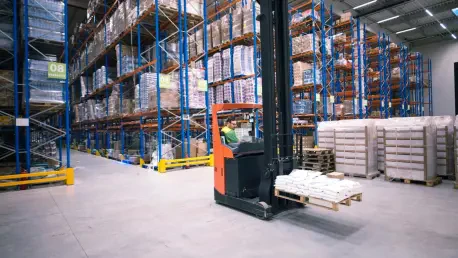In a rapid shift toward automation, The Foschini Group (TFG) has dramatically redefined logistics in the retail sector through its advanced Riverfields Distribution Center. Located in Gauteng, South Africa, this hub serves as a cornerstone for TFG’s commitment to omnichannel distribution, relying heavily on next-generation technology to meet evolving market demands. As the retail landscape continues to evolve with the growing dominance of e-commerce and heightened consumer expectations, this article examines the current state, challenges, and future projections for TFG’s logistics and distribution strategies.
Rising Demand and Changing Consumer Preferences
Retail logistics have evolved tremendously in response to the rising e-commerce boom and changing consumer preferences. TFG’s journey reflects these trends as the company moves its logistics operations from a decentralized model to a centralized system focused on swift demand response. These transformations not only illustrate TFG’s adaptability but also highlight an overarching move within the industry toward centralized operations and efficient technology deployment. The Riverfields Distribution Center exemplifies this shift, acting as a vital hub for consolidating and centralizing supply chains and demonstrating the critical importance of advanced distribution centers in today’s retail environment.
Embracing Automation and Centralization
Automation: Unleashing Efficiency
The integration of sophisticated automation systems within the Riverfields DC marks a turning point in TFG’s logistical capabilities. Through collaboration with technology partner FORTNA, TFG has enhanced its operations by implementing advanced tools such as RFID for inventory control and automated picking systems. These innovations have increased efficiency, reduced the time between order placement and delivery, and significantly boosted product availability across retail touchpoints, directly impacting customer satisfaction.
Operational Costs and Streamlined Logistics
Centralization has allowed TFG to capitalize on economies of scale, reducing operational costs through a shared transport network and streamlined delivery processes. By reducing distribution centers from 13 to 7, TFG not only minimizes the complexity of logistics but also strengthens its delivery efficiency. This consolidation supports both home deliveries and store collection services, exemplifying a strategic move toward cost-effective operations that benefit customers with faster service.
Overcoming Challenges with Innovative Solutions
The transition to a highly automated distribution model presents notable challenges, including logistical diversity and the need for workforce adaptation. TFG addresses these through innovative systems such as the put-wall for batch processing during peak periods, aligning logistics with market needs. These innovations underscore a broader strategy to maintain agility and responsiveness, vital traits in the dynamic retail environment.
Strategic Outlook and Industry Trajectory
Adapting to a future of increased automation and centralized logistics offers TFG a competitive edge in a fast-paced retail landscape. As industry trends lean toward real-time analytics and demand-driven logistics, the integration of advanced technologies like AI stands poised to influence future enhancements in supply chain operations. Despite emerging economic pressures, TFG’s strategic adoption of cutting-edge logistics solutions positions it well in adapting to rapid market changes, setting the stage for continued innovation.
Strategic Insights and Practical Implications
Riverfields DC’s successful implementation provides important lessons for other businesses in optimizing their supply chain. By shifting focus to demand-driven logistics and integrating efficient technology solutions, companies can enhance their responsiveness and improve customer service. Emphasizing automation and centralization, along with real-time data utilization, can offer a competitive advantage in navigating the shifting retail market landscape.
In conclusion, TFG’s advancements in automation and centralization at the Riverfields Distribution Center reflect a keen strategic vision for elevating logistics within retail. The focus on efficiency, scalability, and technological integration has not only driven down costs but also significantly enhanced the customer experience. These developments underscore the importance of embracing innovative logistics solutions to secure a leadership position within the evolving retail sector, setting a benchmark for competitors to follow.









